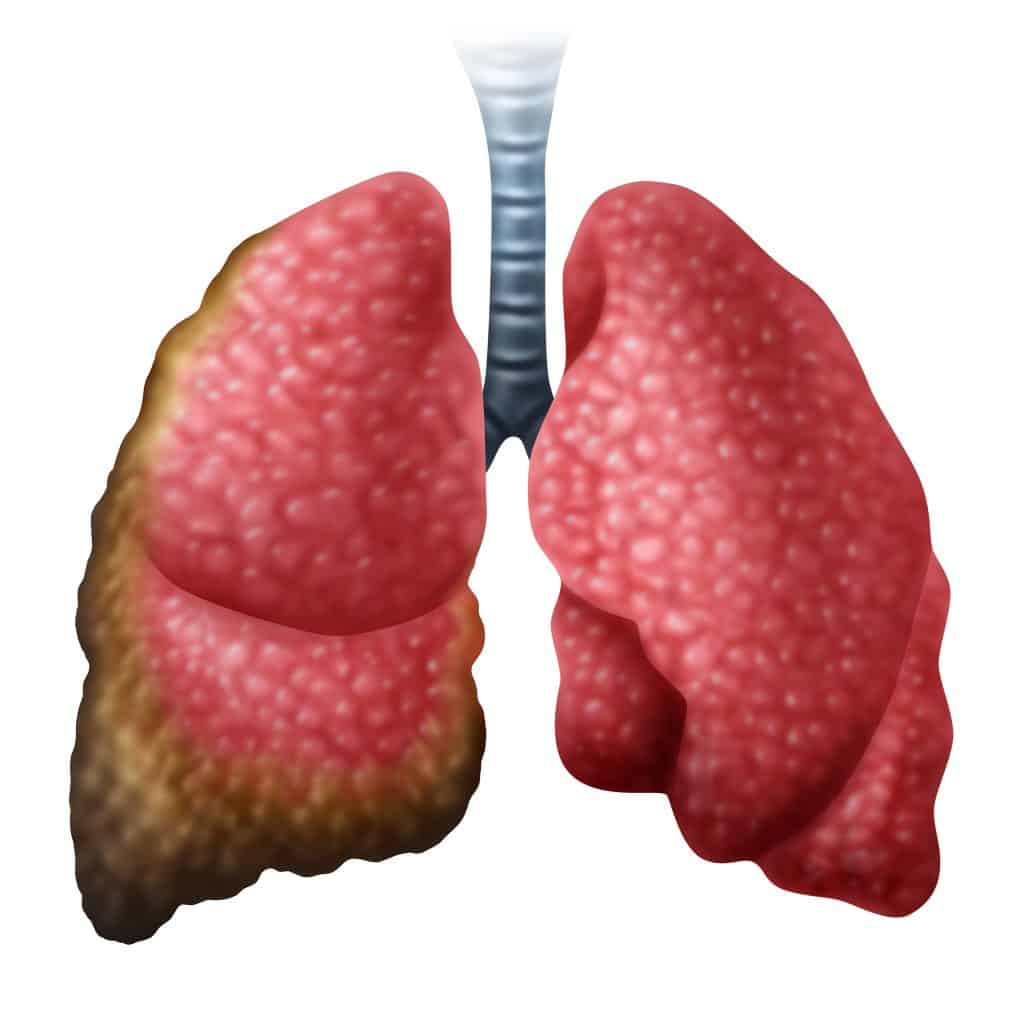Epithelioid is a common type of mesothelioma is mesothelioma. The cells for this type of mesothelioma can be found in cube, squamous, or columnar shapes. Epithelioid mesothelioma cells are found in the lining of the lung, causing difficulty breathing. Due to the placement, doctors often mistake epithelioid mesothelioma with lung cancer.
Due to the lack of aggression in the epithelioid mesothelioma cells, this type of mesothelioma has a longer life expectancy. There are more treatment options because the cancer is less likely to spread. There is no cure for epithelioid mesothelioma, but treatments can extend life expectancy and enhance the quality of life.
The rarest form of mesothelioma is sarcomatoid mesothelioma. Sarcomatoid mesothelioma manifests in sarcomatoid cells, which are in an oval-like shape that resembles a spindle. The Sarcomatoid mesothelioma spreads quickly due to its more aggressive nature. The prognosis for is sarcomatoid mesothelioma is poor. There is no cure for sarcomatoid mesothelioma, but treatments can extend life expectancy and enhance the quality of life.
Sarcomatoid mesothelioma is commonly misdiagnosed as lung cancer. Sarcomatoid mesotheliomas life expectancy is anywhere between one to 28 months. Chemotherapy is the first defense for sarcomatoid mesothelioma. Radiation therapy can also be used palliatively for treatment.
Biphasic mesothelioma occurs when a patient’s cancer contains both epithelioid cells and sarcomatoid mesothelioma. The life expectancy of biphasic mesothelioma has many factors that affect it. Like any mesothelioma, stage cancer has progressed a significant effect on the prognosis. For biphasic mesothelioma, the prognosis depends on whether cancer has more sarcomatoid cells or epithelioid cells. If the cancer contains more sarcomatoid cells, there is a lower chance of survival. If the cancer has higher epithelioid cells, stronger prognosis number of epithelioid cells, there is a stronger prognosis.
While mesothelioma cell type may not affect a patient’s symptoms, it can affect their life expectancy.
Pleural Mesothelioma
The most common type of mesothelioma cancer is pleural mesothelioma. Pleural mesothelioma occurs when a mesothelioma tumor forms in the pleura or lining between the lung and ribcage. The tumor combined with the pleura thickening creates the pleural mesothelioma.
The life expectancy for pleural mesothelioma is 18 months. There is currently no cure for pleural mesothelioma. Often, this form of cancer is aggressive and resistant to many treatments. Properly treating mesothelioma can improve quality of life as well as life expectancy. Younger patients in earlier stages of pleural mesothelioma tend to live longer.
It is important to speak with an experienced doctor to figure out what to best course of action is for you and monitor you as your body undergoes treatment.
Symptoms of Pleural Mesothelioma
- Pain in the side of the chest or lower back
- Difficulty breathing
- Cough
- Difficulty swallowing
- Hoarseness
- Swelling
- Weight loss
- Fluid in the lungs
- Loss of appetite
- Weakness

Pleural Mesothelioma Treatment Options:
- Radiation therapy
- Surgery
- Chemotherapy
Peritoneal Mesothelioma
One of the rarer forms of mesothelioma is peritoneal mesothelioma. Peritoneal mesothelioma forms in the abdomen. In rarer cases, cancer can form in the lining of the heart.
Peritoneal mesothelioma, like most mesothelioma cancers, is caused by the ingestion or inhalation of asbestos fibers. The fibers get lodged in the abdomen or lining of the heart and form tumors over time. Peritoneal mesothelioma can take 10 to 50 years to develop. When receiving a peritoneal mesothelioma diagnosis, the prognosis is the same. There is no cure for peritoneal mesothelioma, but treatments can extend life expectancy and enhance the quality of life. The typical life expectancy for peritoneal mesothelioma is 2-6 years.
Diagnosing Peritoneal Mesothelioma
- Imaging scans
- Biopsies
- Blood tests
Diagnosing Peritoneal Mesothelioma
- Radiation therapy
- Surgery
- Chemotherapy
Diagnosing Peritoneal Mesothelioma
- Pain in the abdomen
- Abdominal swelling
- Weight loss
- Blood clotting
- Loss of appetite
- Fever

Sarcomatoid Mesothelioma
The rarest form of mesothelioma is sarcomatoid mesothelioma. Sarcomatoid mesothelioma manifests in sarcomatoid cells, which are in an oval-like shape that resembles a spindle. The Sarcomatoid mesothelioma spreads quickly due to its more aggressive nature. The prognosis for is sarcomatoid mesothelioma is poor. There is no cure for sarcomatoid mesothelioma, but treatments can extend life expectancy and enhance the quality of life.
Sarcomatoid mesothelioma is commonly misdiagnosed as lung cancer. Sarcomatoid mesotheliomas life expectancy is anywhere between one to 28 months. Chemotherapy is the first defense for sarcomatoid mesothelioma. Radiation therapy can also be used palliatively for treatment.
Sarcomatoid Mesothelioma Symptoms
- Anemia
- Weight loss
- Chest pain
- Fatigue
- Coughing up blood
- Shortness of breath
Sarcomatoid Mesothelioma Symptoms
- Imaging scans
- Biopsies
- Blood tests

Sarcomatoid Mesothelioma SymptomDiagnosing Sarcomatoid Mesothelioma
Epithelioid Mesothelioma
A common type of mesothelioma is epithelioid mesothelioma. The cells for this type of mesothelioma can be found in cube, squamous, or columnar shapes. Epithelioid mesothelioma cells are found in the lining of the lung, causing difficulty breathing. Due to the placement, doctors often mistake epithelioid mesothelioma with lung cancer.
Due to the lack of aggression in the epithelioid mesothelioma cells, this type of mesothelioma has a longer life expectancy. There are more treatment options because the cancer is less likely to spread. There is no cure for epithelioid mesothelioma, but treatments can extend life expectancy and enhance the quality of life.
Subtypes of epithelioid cells
- Glandular
- Tubulopapollary
- Adenomatoid
- Solid
- Deciduoid
Epithelioid Mesothelioma Symptoms
- Fatigue
- Weight loss
- Nausea
- Fluid build up
- Bloating
- Pain in the chest or abdomen
- Dry cough
- Shortness of breath

Biphasic Mesothelioma
Biphasic mesothelioma occurs when a patient’s cancer contains both epithelioid cells and sarcomatoid mesothelioma.
The life expectancy of biphasic mesothelioma has many factors that affect it. Like any mesothelioma, stage cancer has progressed a significant effect on the prognosis. For biphasic mesothelioma, the prognosis depends on whether cancer has more sarcomatoid cells or epithelioid cells. If the cancer contains more sarcomatoid cells, there is a lower chance of survival. If the cancer has higher epithelioid cells, stronger prognosis number of epithelioid cells, there is a stronger prognosis.
While mesothelioma cell type may not affect a patient’s symptoms, it can affect their life expectancy.
Biphasic Mesothelioma Treatment Options:
- Radiation therapy
- Surgery
- Chemotherapy


